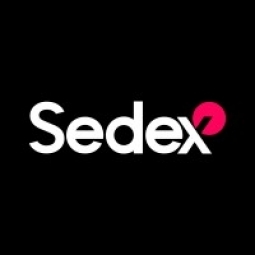技术
- 传感器 - 环境传感器
- 传感器 - 电表
适用行业
- 教育
- 药品
适用功能
- 人力资源
- 采购
用例
- 室内空气质量监测
- 室外环境监测
服务
- 培训
关于客户
Symrise AG 是一家全球香料、香精、食品、营养品和化妆品原料供应商。他们的客户包括香水、化妆品、食品和饮料、药品制造商以及营养补充剂和宠物食品生产商。该公司总部位于德国,在全球拥有 10,000 多名员工,在六大洲设有 100 多个分支机构。 Symrise 战略的核心部分是可持续采购,约 10,000 种原材料来自 100 多个国家。公司认识到负责任和可持续的运营对于今天的业务以及明天的成功至关重要。
挑战
Symrise AG 是一家全球香料、香精、食品、营养品和化妆品原料供应商,致力于负责任地运营和采购。 Symrise 战略的核心部分是可持续采购,约 10,000 种原材料来自 100 多个国家。公司认识到负责任和可持续运营对于当今业务和未来成功的重要性。然而,该公司也承认企业投资者对促进社会和环境可持续发展的兴趣日益浓厚。这就提出了将可持续发展目标与企业融资相结合、制定共同目标以形成一项综合战略的挑战。
解决方案
Symrise AG 通过签署第一份贷款协议来应对这一挑战,并提供与社会和环境可持续发展目标相关的财务激励。该协议是一项包含可持续发展相关元素的“循环信贷融资”(RFC),是全球香精香料行业的首个此类协议。该贷款将为 Symrise 提供较低的利差,具体取决于其在三个指标上的表现:减少温室气体排放、在 Sedex 的 SMETA 审计的四个领域(劳工管理、健康与安全、商业道德和环境管理)中进行更负责任和可持续的采购,墨西哥、印度和埃及等干旱地区的用水效率更高。 Symrise 将把新贷款协议中任何利差调整的价值捐赠给马达加斯加北部的救助儿童会青年计划,以扩大对该地区人民的支持。
运营影响
数量效益

Case Study missing?
Start adding your own!
Register with your work email and create a new case study profile for your business.
相关案例.

Case Study
Case Study: Pfizer
Pfizer’s high-performance computing software and systems for worldwide research and development support large-scale data analysis, research projects, clinical analytics, and modeling. Pfizer’s computing services are used across the spectrum of research and development efforts, from the deep biological understanding of disease to the design of safe, efficacious therapeutic agents.

Case Study
Fusion Middleware Integration on Cloud for Pharma Major
Customer wanted a real-time, seamless, cloud based integration between the existing on premise and cloud based application using SOA technology on Oracle Fusion Middleware Platform, a Contingent Worker Solution to collect, track, manage and report information for on-boarding, maintenance and off-boarding of contingent workers using a streamlined and Integrated business process, and streamlining of integration to the back-end systems and multiple SaaS applications.

Case Study
Process Control System Support
In many automated production facilities, changes are made to SIMATIC PCS 7 projects on a daily basis, with individual processes often optimised by multiple workers due to shift changes. Documentation is key here, as this keeps workers informed about why a change was made. Furthermore, SIMATIC PCS 7 installations are generally used in locations where documentation is required for audits and certification. The ability to track changes between two software projects is not only an invaluable aid during shift changes, but also when searching for errors or optimising a PCS 7 installation. Every change made to the system is labour-intensive and time-consuming. Moreover, there is also the risk that errors may occur. If a change is saved in the project, then the old version is lost unless a backup copy was created in advance. If no backup was created, it will no longer be possible to return to the previous state if and when programming errors occur. Each backup denotes a version used by the SIMATIC PCS 7 system to operate an installation. To correctly interpret a version, information is required on WHO changed WHAT, WHERE, WHEN and WHY: - Who created the version/who is responsible for the version? - Who released the version? - What was changed in the version i.e. in which block or module of the SIMATIC PCS 7 installation were the changes made? - When was the version created? Is this the latest version or is there a more recent version? - Why were the changes made to the version? If they are part of a regular maintenance cycle, then is the aim to fix an error or to improve production processes? - Is this particular version also the version currently being used in production? The fact that SIMATIC PCS 7 projects use extremely large quantities of data complicates the situation even further, and it can take a long time to load and save information as a result. Without a sustainable strategy for operating a SIMATIC PCS 7 installation, searching for the right software version can become extremely time-consuming and the installation may run inefficiently as a result.

Case Study
ELI LILLY ADOPTS MICROMEDIA’S ALERT NOTIFICATION SYSTEM
Pharmaceutical production is subject to a strict set of enforced rules that must be adhered to and compliance to these standards is critically necessary. Due to the efforts of WIN 911’s strategic partner Micromedia, Lilly was able to adopt an alarm notification infrastructure that integrated smoothly with their existing workflows and emergency hardware and protocols. These raw energy sources enable the industrial process to function: electricity, WIN-911 Software | 4020 South Industrial Drive, Suite 120 | Austin, TX 78744 USA industrial steam, iced water, air mixtures of varying quality. Refrigeration towers, boilers and wastewater are monitored by ALERT. Eli Lilly identified 15000 potential variables, but limitations compelled them to chisel the variable list down to 300. This allowed all major alarms to be covered including pressure, discharge, quantity of waste water discharged,temperature, carbon dioxide content, oxygen & sulphur content, and the water’s pH.









